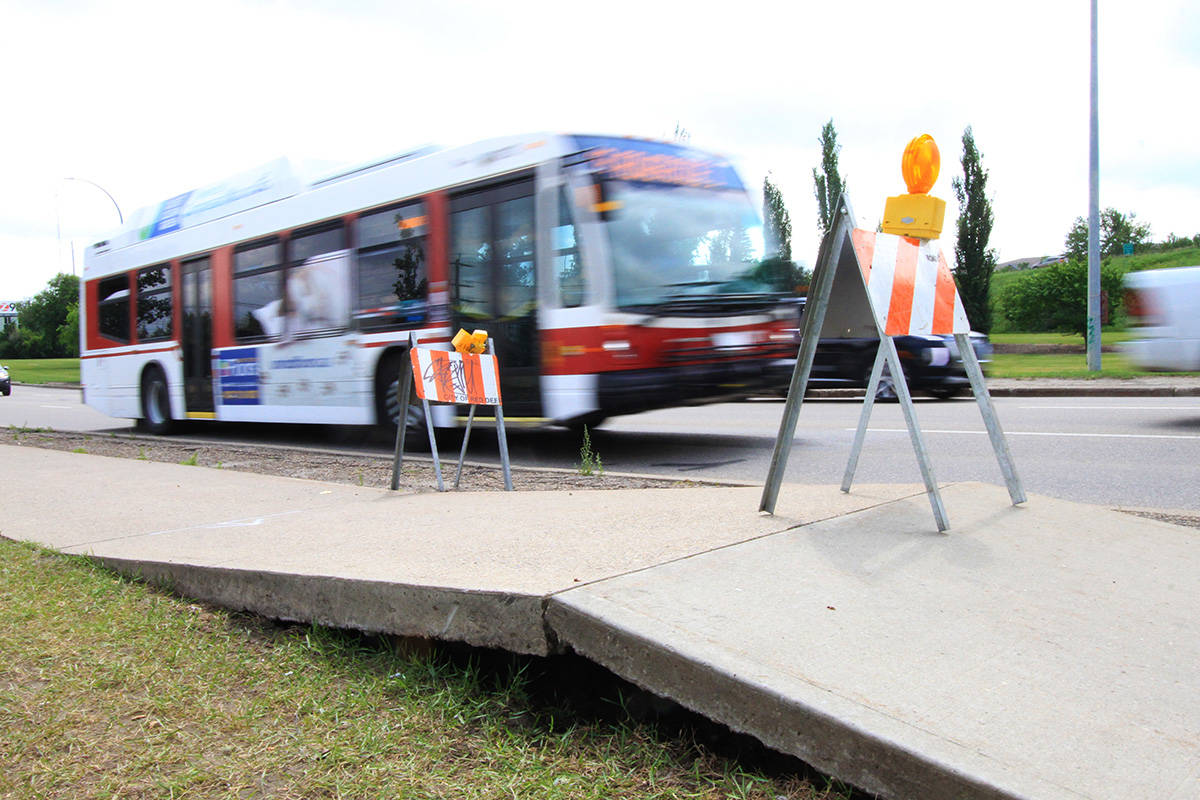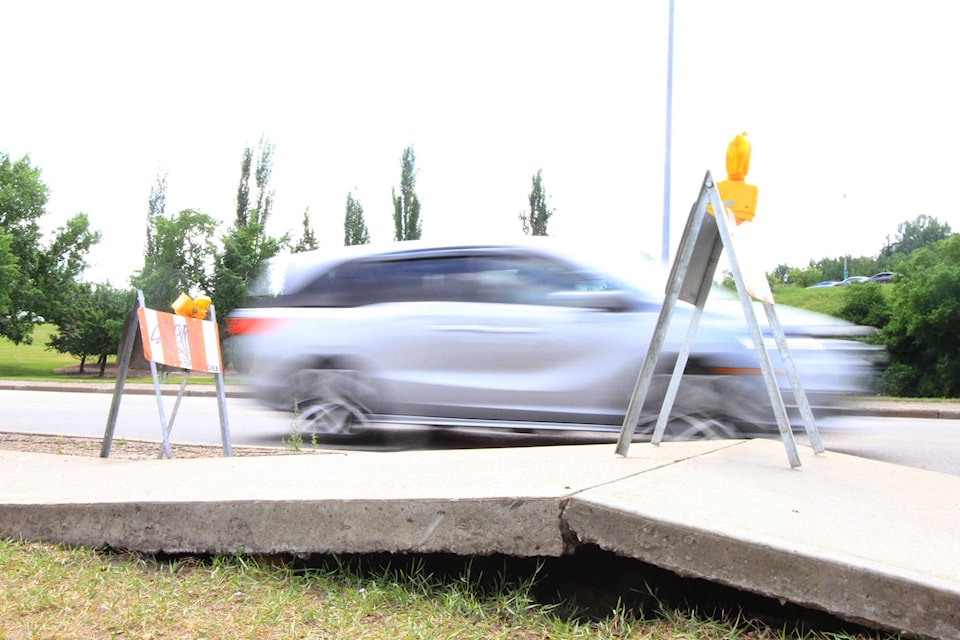The heat wave did not only take a toll on city residents, some city sidewalks also took a beating.
City of Red Deer has identified about a dozen spots around the city where concrete has heaved after being baked for days in a historic heat wave that set dozens of records across the province from June 25 to July 2.
On 49th Avenue on the north hill, a section of sidewalk has been pushed up about 10 centimetres, as hot concrete expanded until it had nowhere else to go but up.
Red Deer public works manager Greg Sikora said the damage boils down to basic concrete sidewalk construction physics.
“The compressive force of the panels is so much that it essentially buckles or pops,” he said. “It can tense up to six to eight inches of deflection.
“It can happen on a sidewalk panel, it can happen at a catch basin, it happens at multiple locations.”
Considering there are around 650 km of roads, concrete sidewalks, curbs and other road structures around the city, the damage is a small part of the city’s maintenance budget. Repairs will cost somewhere in the range of $10,000 to $15,000.
Heat wave damage has occurred across the province. Various photos of heaved sidewalks have been posted online. One person posted a photo of plastic park benches in Clairmont that had been left bowed by the heat. Clairmont is about eight km north of Grande Prairie, which recorded the highest temperature in Alberta during the heat wave on June 29 at 41.5 C.
Sikora said while some might not think of concrete as a material likely to expand in the heat or shrink in the cold it has a thermal expansion 10-millionths per degree Celsius. By comparison, steel’s expansion rate is 13-millionths per degree.
“The way I kind of look at is if you have 100 metres of sidewalk and you have a one degree change in temperature you would have about a one millimetre change in length.
“It doesn’t sound like a lot, but if you have a 10 or 15 degrees over 100 metres you have about 15 mm change in length.”
If you multiply that over stretches of sidewalk hundreds of metres long, the compressive force can be considerable.
The reason a few millimetres makes a difference is because of the high compressive strength of concrete.
“What ends up happening is it builds up all this compression and the only way for it to actually change its length is to deflect at a construction joint.”
The sand-filled joints between concrete panels are designed to make room for that expansion and usually they do their job pretty well. Similarly, bridges are designed with joints to allow for expansion and contraction depending on temperature.
However, when temperatures get extreme, some of those joints are pushed past their expansion limit.
Roads are much less prone to heat damage because of asphalt.
“Asphalt is deformable. Ashphalt has an oil binder in it that allows it to flex and deform without that high compressive strength. So you won’t see deflections like you see in concrete,” he said. If there is damage, it’s more along the lines of minor rutting because the asphalt has gotten softer.
The physics of expansion and contraction due to temperature change colour other city infrastructure decisions.
Plastic’s expansion rate can vary from 20- to 200-millionths.
“What we try to stay away from is purely plastic objects,” he said. That’s why most park benches are wood or steel wrapped in a vinyl sheathing that does not expand or contract.
Playground equipment can warp under extreme heat, but tends to revert back to its original shape when it cools down.
News tips
Like us on Facebook and follow us on Twitter

